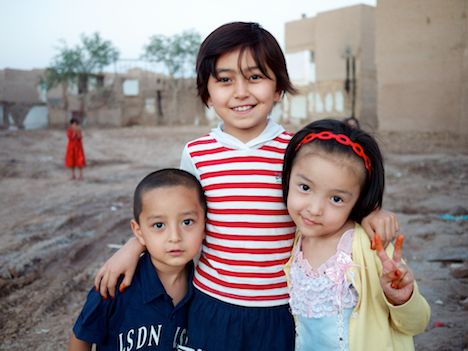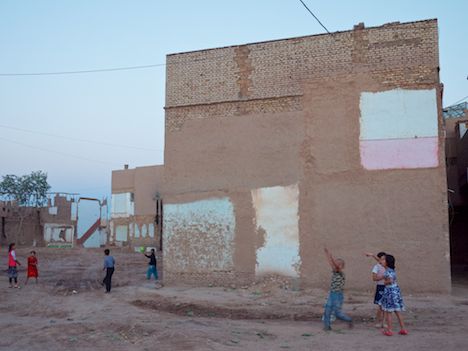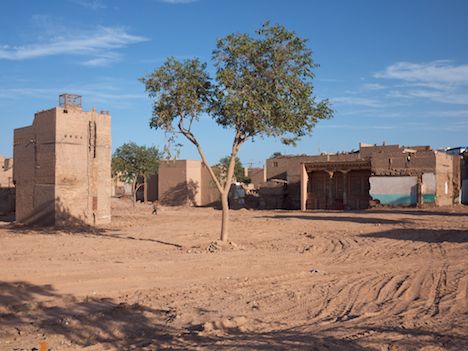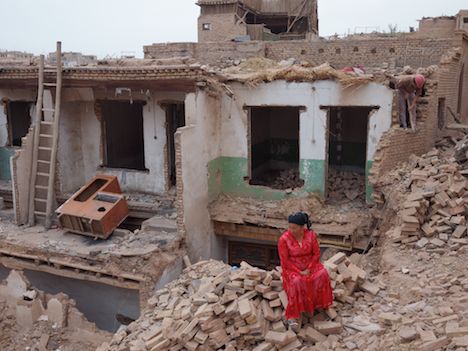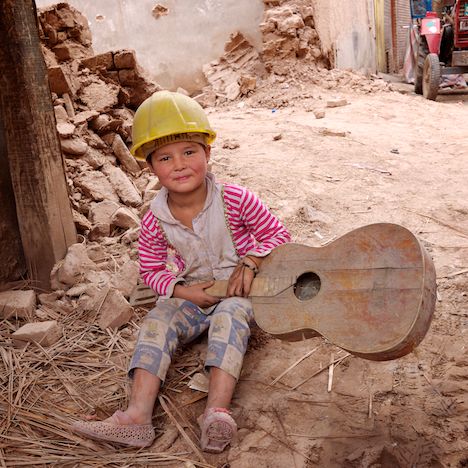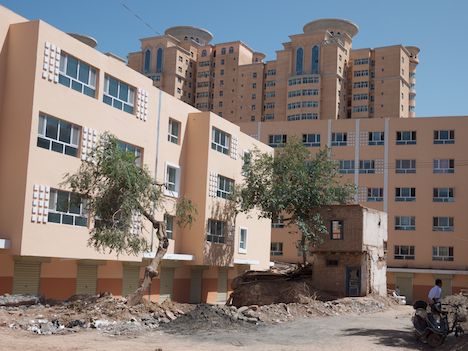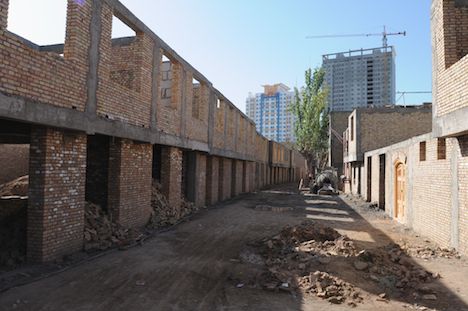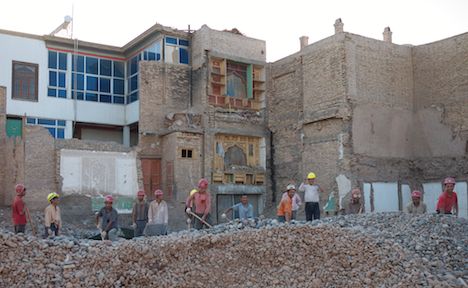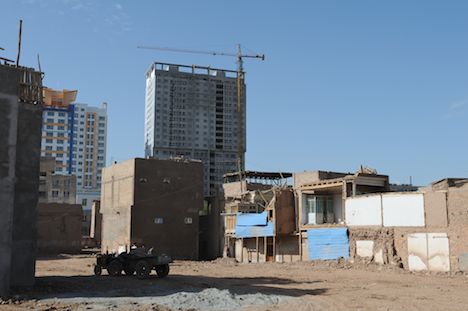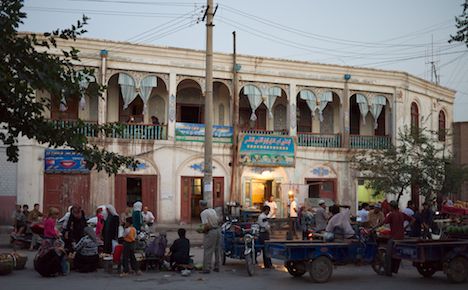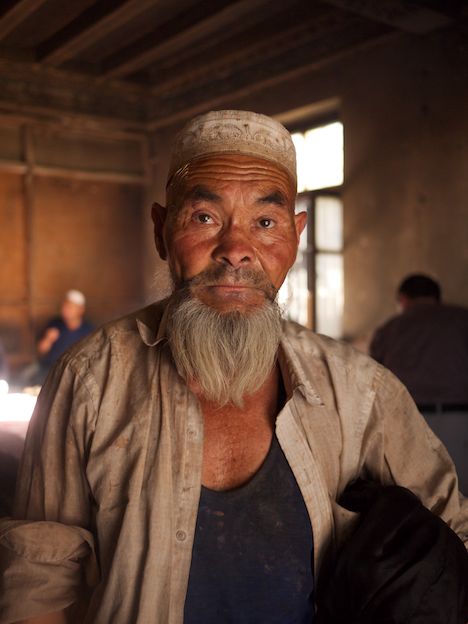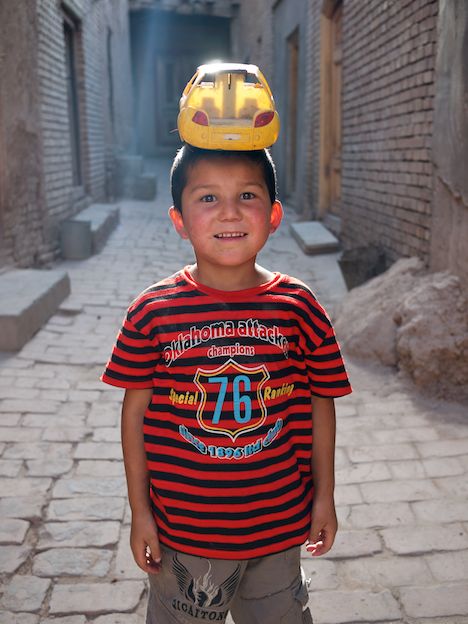-
Philosophical musings on how Google Earth not just captures places, but places in time.
Category Archives: Uncategorized
Chinese iPhone 4: Curious Google search results (+ more crippled maps)
On iPhones sold outside China and used outside China, the Google domain that gets used by Safari’s Google search bar depends on your chosen region format setting (under Settings > General > International). If your region format is set to Belgium, your results are served via google.be. If your region format is set to the United Kingdom, you get google.co.uk. Etc. This makes sense.
If you use an iPhone sold outside China inside China, the results depend on whether you use a VPN service. If you do, your region format continues to determine your Google domain (in these screenshots set to Belgium):
Hong Kong iPhone 3GS, VPN enabled, region format: Belgium:

If you do not use VPN, however, all searches are automatically redirected to google.cn and are served from that domain. This is odd, because Google earlier this year announced it had stopped serving censored search results via google.cn, instead asking people to click through to google.com.hk. This is clearly not the case on my iPhone 3GS: mobile google.cn searches still work (just try this URL to see for yourself):
Hong Kong iPhone 3GS, VPN disabled, region format: Belgium:

So is Google still serving censored search results on Google.cn, despite its promise to stop, or are these search results uncensored, in defiance of Chinese law? I’m not sure, but a search for Dalai Lama yields a results page that links to the homepage of the Tibetan government in exile, and this is a website blocked in China that almost certainly would not make it into Google’s censored search results.
On the new Chinese iPhone 4, using Safari’s Google search bar leads to a different outcome. On this iPhone, it doesn’t make any difference what your region format is, whether you use VPN or not, or where in the world you use it — you are not returned your results immediately, but instead get a landing page on Google.cn that you need to click manually before you are redirected and shown your results on Google.com.hk:
Chinese iPhone 4, VPN disabled, region format: Belgium:

Chinese iPhone 4, VPN enabled, region format: Belgium:

In other words, the Chinese iPhone 4 ignores your region format setting, and always returns a google.cn landing page that manually redirects you to google.com.hk. This is just aggravating, because just as with any other iPhone, you can still type in google.co.uk or .com or .be into the address bar and search that way. (And if you use VPN, your search queries won’t be filtered for sensitive words by China’s great firewall.)
As for the crippled Maps app discussed in the previous post: In response to various comments, here are some more screenshots illustrating their lack of usefulness:
In Paris, all street names are in Chinese only:

The same goes for Montreal:
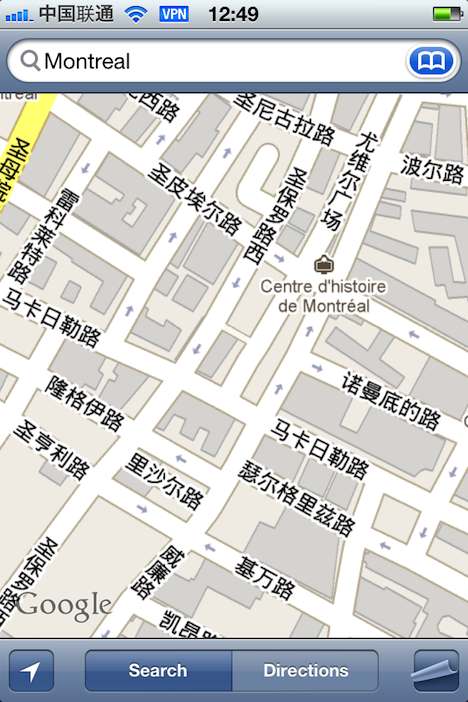
Ditto for Sydney:
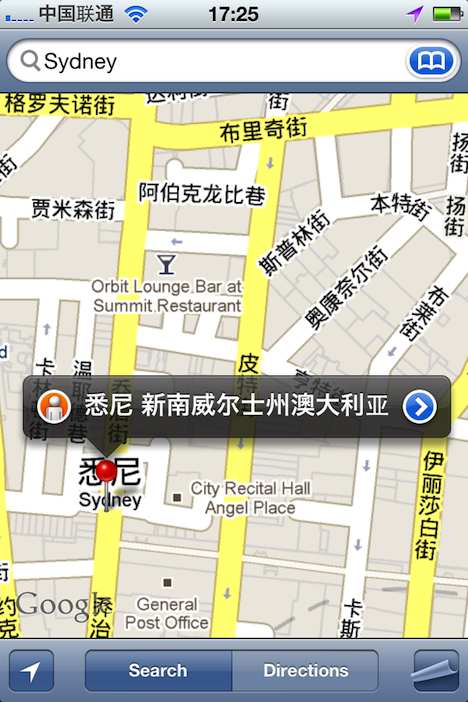
In Rome, there are no street names at all (as is the case in much of the rest of Europe):
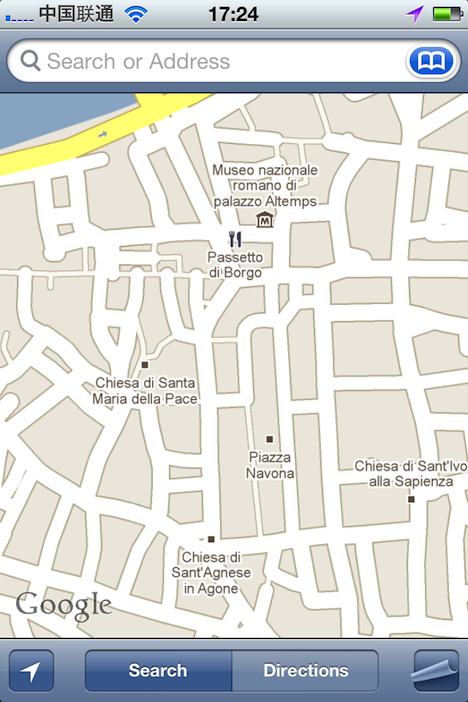
As for the Spratley islands in the South China Sea, they are definitely Chinese, as is Taiwan for good measure:
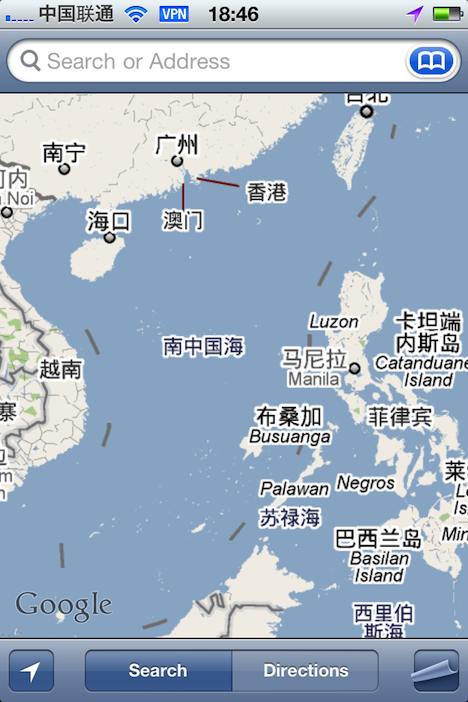
By comparison, here is what the map fit for global consumption looks like, on the Hong Kong iPhone 3GS:
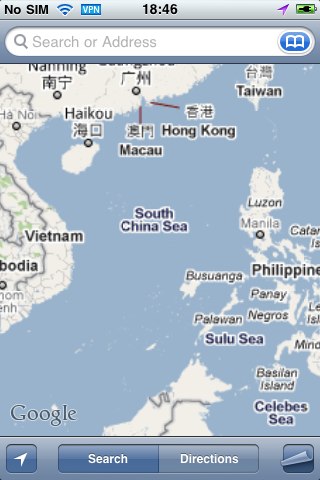
The solution is clear, at least to me: First, Google needs to go bilingual in its Chinese map dataset. Most likely the missing street names are just an oversight, and an upcoming update will address this issue with refreshed map tiles. No iPhone software update is needed for this.
Then, in iOS 4.2, give the Maps app a settings pane that lets you choose which Google Maps dataset you want: International, Chinese, or Indian. (The Indian government also has issues with Google’s borders, and demands a separate semi-fictional dataset for maps.google.co.in, where all of Kashmir is Indian-controlled and Arunachal Pradesh is not disputed by China.) I don’t care what the defaults are, as long as I can change them.
Failing that, let the region format setting determine which map gets served. Choose China, and the Chinese map dataset is served. Choose India, and get the Indian dataset. Every other region gets the reality-based map, where lines of control and disputed regions are accurately depicted.
As for Safari’s Google search bar: If I can’t choose the Google search domain via the region format or via a settings panel preference, then please add an option to remove the search bar wholesale. I’ll use Google’s search app with instead, thank you very much.
Is that too much to ask? It would appease paranoid governments while giving users the ability to choose the information frameworks most pleasing to their own personal biases.
[Update 2010-09-28 13:06 UTC: As far as I can tell, the map dataset hardwired to my Chinese iPhone is identical to the one being served at ditu.google.cn, so you can explore it for yourself if you like. On a desktop computer, the lack of street names is perhaps not so glaring an omission. On a mobile device traveling to one of these cities, however, it’s a dealbreaker.]
Beware: Chinese iPhone 4 comes with a crippled Maps app
The iPhone 4 officially landed in China yesterday, so I bought one from the new Apple Store at Xidan in Beijing. In China, Apple sells its iPhones unlocked and without a contract (16GB = USD747, 32GB = USD895), so you can pretty much stick in any sim card and go. This is how I like my phones — and why I skipped buying an iPhone 4 in Sweden or the US (contract-only) or Belgium (hefty VAT markup).
I soon discovered that the Chinese version of the iPhone 4 comes with an aggravating quirk, though: The built-in Maps app is crippled. My phone’s base map is hard-wired to Google Maps’ censored dataset for China, where the depiction of China’s borders complies with the official propaganda of the Chinese government. It does not, for example, show the region of Arunachal Pradesh as being disputed by China and India. On my phone, it belongs to China, even though the facts on the ground belie it — it is currently administered by India.
I discovered this quirk because the first thing I did after activation was to do a wholesale install of the backed-up contents of my old iPhone 3GS, bought in Hong Kong. On my 3GS, I knew exactly how the Maps app worked: If I went online in China without a VPN, the Google Maps dataset was an English-language version that nevertheless had borders which complied with Chinese law (i.e. they show Arunachal Pradesh as being Chinese). As soon as I turned on my VPN to tunnel into San Francisco, the refreshed base map automatically showed the proper international version, the one which the rest of the world gets to see. You could make the case that Apple and Google just want to comply with local Chinese law — even though the legality of Google’s mapping service in China is even now in question, as it still needs to comply successfully with a new Chinese law that requires a license to publish online maps in China.
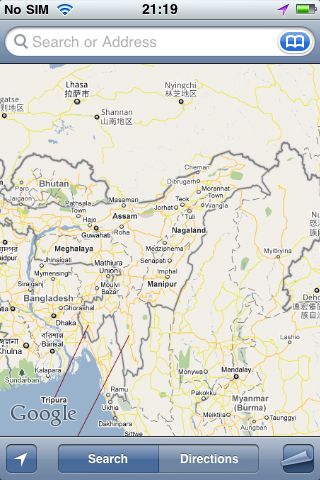
Hong Kong iPhone 3GS online in Beijing, no VPN
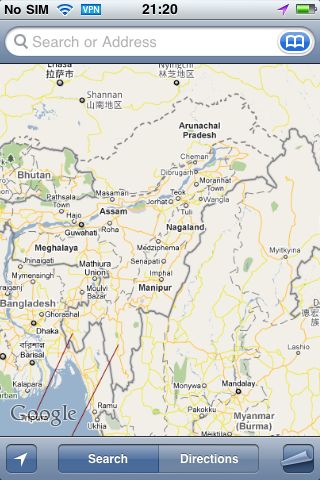
Hong Kong iPhone 3GS online in Beijing, VPN enabled
But my new Chinese iPhone 4 does things differently, even though ostensibly it is meant to be running exactly the same software as my old phone. The Maps app always shows China’s borders as the Chinese government would have them — regardless of whether I use my VPN or not. If I take this phone to the US or Europe, it will still show the same crippled, semi-fictional base map. And there is no way that I can change it.
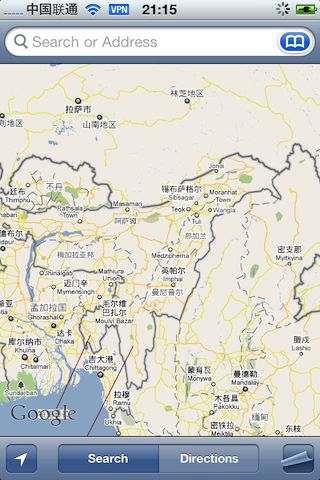
Chinese iPhone 4, online in Beijing, VPN enabled
(The Chinese iPhone 4’s dataset is slightly different from the one served inside China to my Hong Kong iPhone 3GS, however: on my Chinese iPhone 4, place names outside China are both in Chinese and English (and sometimes also in a local script, such as Arabic). San Francisco, for example, is accompanied by its Chinese name, ÊóßÈáë±±. That’s not the case on my Hong Kong iPhone 3GS — all names outside China are just in English (and sometimes also in a local script).
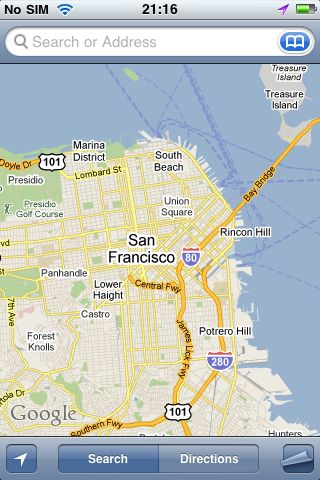
Hong Kong iPhone 3GS, online in Beijing, no VPN
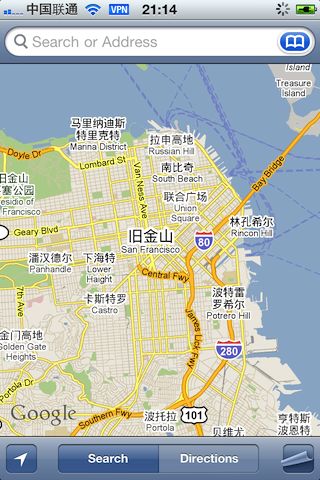
Chinese iPhone 4, online in Beijing, VPN enabled
In other words, Google keeps and serves two base map datasets that comply with Chinese law — one in English, and one in Chinese.)
This is not the first time Apple has willingly crippled its iPhones to legally access new markets. In Egypt, the first iPhones lacked a GPS receiver to comply with a local ban. The first Chinese iPhones lacked wifi. iPhone 4s currently sold in the United Arab Emirates lack the Facetime feature, possibly to abide by VOIP regulations.
The question is whether crippling the Maps app on Chinese iPhones is a legal requirement, or whether it’s a case of Apple (and Google) going beyond the call of duty. Is it really illegal to sell a phone where the software settings allow you to choose a base map different from the default? In any case, is it a good idea to rely on a map that may not ever get a license to be legally served in China? Shouldn’t that possibility argue for the ability to choose different base map datasets (OpenStreetMap, for one, perhaps Bing Maps)? Right now, the Maps app reminds me of those cold-war era Soviet radios, without a dial, able to receive just one (propaganda) channel.
Because Apple’s own apps are not deletable, I’ve now buried the Maps app in an obscure folder, and instead replaced the icon with a direct link to maps.google.com, whose mobile-enabled mapping template is just great: Compared with Apple’s app, it serves up a reality-based map in China even without VPN, has much better search (with suggestions) and content such as Wikipedia and Panoramio photos. (Directions are lacking in the mobile version, though.) Another option is to use Google Earth for the iPhone, which looks simply awesome on the iPhone 4’s screen.
Luckily, routing around censorship on the internet is still easy, though not with any help from Apple, in this case.
[Update 2010-09-27 06:00 UTC: As a commenter points out, the map is useless in other ways: In Canada, street names are only shown in Chinese characters – there is no Roman script whatsoever. In other places I’ve checked, such as Belgium and Italy, streets have house numbers, but no names at all – neither Chinese characters nor Roman letters. The base map on my 3GS does not have these shortcomings.]
[Update 2010-09-28: A new entry here on Ogle Earth addresses the Chinese iPhone 4’s curious hardwired Google search results, and adds more Maps screenshots].
links for 2010-09-09
-
The only foreign firm to apply was Nokia, which got its license. But Google is soon sending an exec to China to negotiate, says a China official.
Kashgar panoramas and another apology
I’ll be off the internet again for a week (this time traveling in Indonesia) so preëmptive apologies for the lack of updates, but before I’m off: I managed to get the first two panoramas done from Kashgar. Here’s my favorite spot in Kashgar:
Tea house and evening market, Kashgar in Xinjiang
(It was used as a backdrop for The Kite Runner — that movie was shot in Kashgar, BTW.)
And here’s a panorama taken from inside another tea house. I’ve got more updates planned for as soon as I’m back.
The last days of old Kashgar
Kashgar, in China’s remote far-west Xinjiang province, lies on a fertile crescent at the convergence of ancient caravan routes linking India, Central Asia and China. For over a millenium, this fabled city was a crucial link in the Silk Route economy, and its culture thrived.
I have long wanted to visit Kashgar. In May 2009, traveling there took on some urgency when it became apparent that the Chinese local government had begun implementing plans to demolish 85% of the remaining old town. The New York Times sounded the alarm; the news raised hackles from preservationists around the world, because Kashgar’s old town was until then regarded as “the best-preserved example of a traditional Islamic city to be found anywhere in central Asia.”
I finally managed to visit Kashgar in late July 2010, and stayed for over a week, walking through practically every alley I could find, documenting the the old town’s transformation and photographing its people.
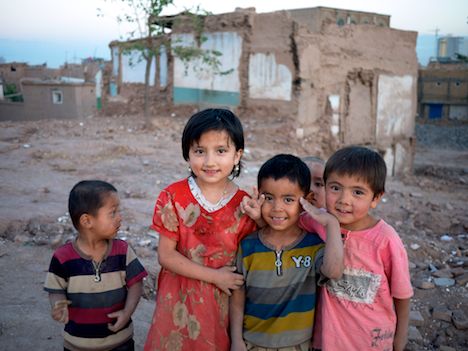
Click on Kashgar photos to enlarge
The photos I took are up on Flickr, but a project like this is made to be published on Google Earth, so I georeferenced the photos using GPS. I also mapped the demolished areas as I walked through them. The resulting files — georeferenced photos, GPS tracks and a superimposed map — can be downloaded as a KMZ file for Google Earth. This is a documentary snapshot of Kashgar circa August 1, 2010.
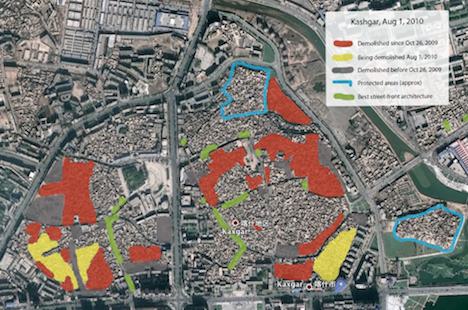
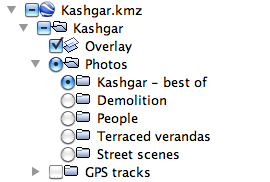
What did I find? I can report that almost half of the remaining old town has been razed, and much of the rest is set to go. Most of the buildings facing the old town’s main streets have been preserved, but the areas behind them are being hollowed out. Many alleys now end in wide-open spaces, empty save for the occasional denuded hold-out home whose exterior walls show the interior decorations of vanished neighbors. Here and there, a lone tree marks the spot of a demolished courtyard. Children have colonized these open spaces as a massive romping ground, for now.
In other parts of the old town, where the bulldozers are only just beginning to venture, I found families busily gutting their own homes, dragging out metal staircases, recovering bricks, salvaging what is salvageable for use in their new home. They looked resigned but not despondent, and were always happy to have me around taking photos. (Kashgaris are extraordinarily friendly and engaging, young and old alike.)
I have learned from living in Shanghai and now Beijing that Chinese authorities — and to a certain extent mainstream Chinese culture — do not attach much importance to protecting traditional vernacular architecture. Imperial palaces and grand religious temples are worthy of preservation or even reconstruction, but not on the whole the hutong of Beijing or the lane houses of Shanghai, which are deemed too ordinary, especially when there is money to made building high-rises in their stead.
In Europe, by contrast, entire towns can remain unmolested, from Óbidos to San Gimignano to Visby. The West’s record is not unblemished, of course: In New York City, Robert Moses was able to do some damage before he found his match in Jane Jacobs, whose 1961 book The Death and Life of Great American Cities redefined how we view and value lower-income urban communities. In Europe, wars did far more damage than Moses ever could, but even there the destruction set in place a process of valuing what was lost, with towns like Ypres and Dresden choosing to meticulously reconstruct their destroyed cores.
Moses might also have had a go at Kashgar, so we Westerners shouldn’t feel too smug; as recently as 1961, when Jane Jacobs’s book was educating us, the Chinese had far more pressing concerns, namely avoiding being among the 35 million who perished through famine in Mao’s Great Leap Forward.
As anyone who has been to Kashgar can attest, the alleys do not divulge much by way of opulence. The public-facing walls of the old town’s homes are bare — made of mud- or baked yellow brick rising 2-3 stories. A wooden door, if open, reveals a curtain preserving the privacy of a shady courtyard inside. The exteriors are not beautiful in an aesthetic sense, though that is not where the effort lies; it’s on the inside that these homes reveal their real wealth, through the ornate woodwork on covered verandas and the intricate stucco interiors.
As old Kashgar is dismantled, the remaining homes are losing their shared exterior walls, affording just for a brief moment a view into their covered courtyards. It’s a swan song, however; soon enough these homes too will disappear, once compensation is agreed to.
(Or if their owners hold out indefinitely they’ll be denied electricity and water until their cause is made irrelevant by “facts on the ground”:)
How are these empty spaces being refilled? It is already possible to discern a two-pronged strategy. Encroaching on the perimeter of the old town, contiguous to main roads or previously built modern construction, 4-6 story medium-rise residential buildings are sprouting. Meanwhile, in the interior of the old town, work crews are constructing 2-3 story reinforced concrete frameworks, at roughly the same scale as the structures they replace. In at least a few cases, I saw new owners filling in the walls themselves with bricks recovered from their old homes. The new construction I’ve seen differs from the old in three ways: It does not in the main conform to the traditional layout of a central covered courtyard; the new alleys are wider, allowing vehicle access; and because they are wider, there is little opportunity to expand homes by building across alleys, as was often done with the old homes.
Work is progressing rapidly. The most recent imagery in Google Earth right now, dated October 26, 2009, shows just the beginning phases of the demolition. When a section has been demolished, crews start prepping the ground for new construction while the next section is cleared. The razing and rebuilding of Kashgar is thus happening concurrently. At this pace, it looks to me like they can get all of it done by mid-2012.
But why does this need to happen at all, let alone so quickly? Some reports (such as the one in Time Magazine) espouse theories portraying the demolition of old Kashgar as an attempt by the majority Han to better subjugate the Uyghurs. The problem with this theory is that demolition on such a scale is not just foisted on China’s ethnic minorities. In Beijing I cycle daily past newly demolished hutong districts. Here too, the process is not transparent, residents are not consulted, and in general are told only at the last possible moment when to vacate homes up for demolition. (Michael Meyer’s The Last Days of Old Beijing is a great read if you want to know more.)
One reason given to journalists for the demolition is that the whole region is earthquake-prone, and thus the only way to preëmptively save Kashgari lives is to destroy their unsafe homes. I mooted that explanation to a local Uyghur guide, who scoffed at it, pointing out that these buildings have survived for centuries. More likely, I think, is that Chinese bureaucrats surveying old Kashgar saw only embarrassing poverty, and unilaterally decided to drag it into the 21st century. These officials may never have been inside a meticulously decorated Uyghur courtyard home, or perhaps they visited a few but did not care much for them. The prospect of handing out building contracts could also have helped the decision to demolish.
But even if I were convinced of the need for a Kashgar makeover, why does it need to happen so quickly? Why not gradually renovate over a 10-15 year period, one neighborhood at a time, replacing just the most precarious structures and bringing modern amenities to the rest? To make a forestry analogy, why clearcut when you could fell selectively, removing just the dead wood, preserving the special character of an old-growth forest?
I can think of a few reasons. First, blunt instruments are cheaper. Second, just as in Beijing, speedy implementations of opaquely arrived-at demolition orders thwart opportunities for organized local resistance. Third, 10-15 year-long projects take too long to be compatible with the hoped-for career trajectories of the local Communist Party bosses, eager to take credit for their initiatives now. (Separately, I fear to think what happens to all the archaeological material that must become visible when an entire city strata is churned over. At this pace, there cannot possibly be time for proper excavations.)
Why hasn’t tourism been a better incentive for preservation? You do see the occasional westerner exploring the town, but the overwhelming majority of tourists in Kashgar are affluent visitors from within China, and they uniformly travel in bussed tour groups, deposited at various locales where they are led to photogenic spots by guides bearing portable loudspeakers. Among these destinations are the two officially protected parts of the old town, the 15% where bulldozers won’t tread. These neighborhoods have been turned into open-air museums, with an entrance fee (RMB 30, USD 4.40) that entitles access to various courtyard homes and souvenir shops. I suspect that the Chinese authorities think these two areas should suffice for the majority of tourists. Depressingly, they may be right.
But tourism alone shouldn’t motivate preservation. Traditional urban geography anchors local culture through the unique social interactions it facilitates; Kashgar’s alleys, with their many small mosques and nearby teahouses, foster micro-neighborhoods safe enough for bare-bottomed toddlers to play unsupervised. Preserving a token part of the old town for touristic purposes is of no value to the ex-residents who have lost their own particular neighborhood.
Will old Kashgar’s urban culture survive the wholesale uprooting of its building stock? A number of residents are opting to spend their compensation on apartments in new high-rises at the edge of the city, which promise decent plumbing and insulation — as did one guide I talked to. (I too like my amenities, so I cannot blame them). Perhaps the new 2-3 story buildings at the center of the old town will be similar enough in scale and function that they can simulate the old urban geography. I hope so, though I fear that the character of old Kashgar will soon change irrevocably, not through necessity or war or natural disaster, but through fiat. And that would be a great pity.
links for 2010-09-02
-
Heather Pringle blogs about her (paywalled) Science Magazine article which looks at how Google Earth is changing the field of archaeology.
